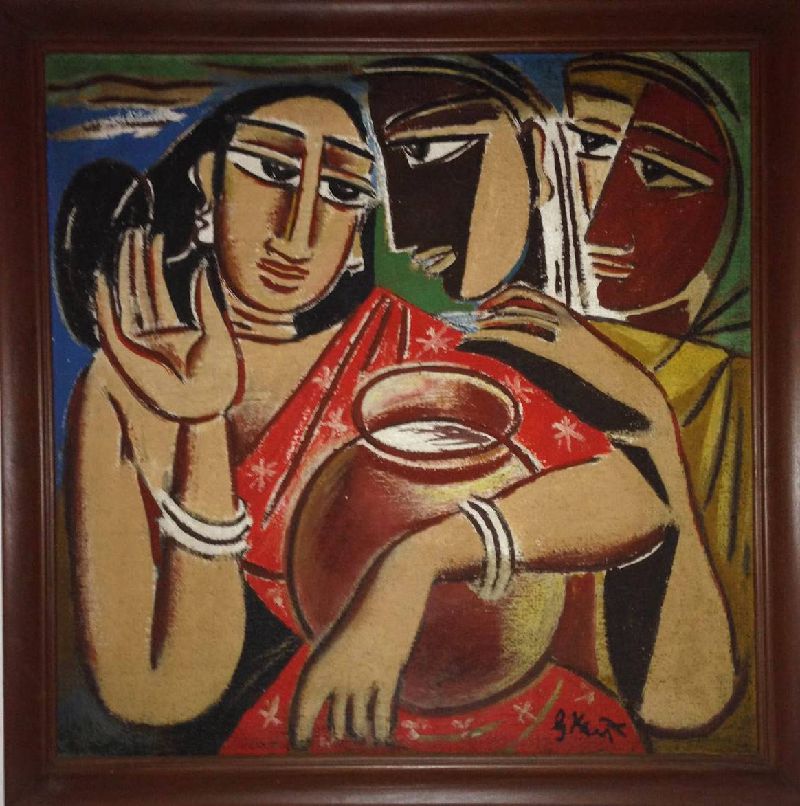
George Keyt (1901–1993) was a Sri Lankan Artist. Born into a prosperous family, Keyt was educated at Trinity College, Kandy. He did not start painting until he was 26, but quickly went on to become an international giant of Modern art and arguably Sri Lanka’s most celebrated artist of the 20th Century.
A founder member of the ‘43 Group, Keyt was known for his predominantly Cubist style. His unique visual idiom combined European modernist innovations with ancient South Asian fresco techniques. A convert to Buddhism, Keyt was heavily influenced by Buddhism and Hinduism as well as Buddhist Jataka tales which formed a recurring theme in many of his works. Keyt’s subject matter was almost always rooted in local tradition, depicting dancers, shepherdesses and gods, often drawn from Hindu and Buddhist mythology. His subjects’ enlarged, almond-shaped eyes are, perhaps, his most consistent stylistic signature, along with an emphasis on bold, crisp lines and a prolonged romance with cubist perspective.
In addition to being a painter, Keyt was a poet. One of his most notable literary works is his translations of the Gita Govinda into English and Sinhalese, which were illustrated by his own line drawings. Many exhibitions of his work have been held all over the world and Keyt’s paintings are found in museums and galleries as well as private collections throughout the world. Furthermore, the Government of Sri Lanka has issued several stamps featuring the paintings of George Keyt.